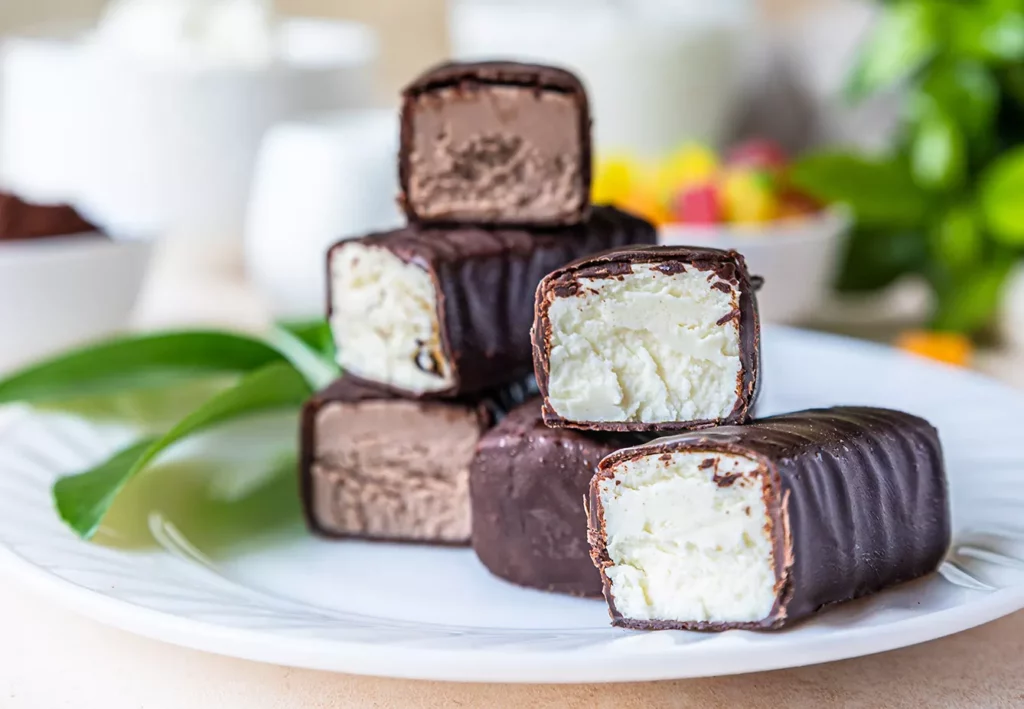I doubt there is a person in this world who doesn’t know the feeling of a sudden sugar craving. Sugar, at first, was reserved for the elites and only later made available to the lower classes. It soon made its way into national cuisines, broadening them with propositions that would primarily take care of our endorphin levels, less than presenting high nutritional value.
The how-to of Hungarian sweets
Be it as it may, desserts are what many of us look forward to. After all, what would a nice meal be if it weren’t crowned with a sweet treat afterward? And what cup of tea or coffee at a café isn’t made more memorable when accompanied by a slice of sugary delight? Hungary has unquestionably mastered the art of lush desserts and now offers unique treats that are a must-try when visiting. Get to know some of them!

Sweet drum – Dobos torta
The title of the most iconic torta (torta meaning cake, although many foreigners would say that this type of cake is what many countries consider a Birthday/celebration cake) belongs to the Dobos cake, which takes its name after its inventor – Józef Dobos. Apart from being a successful chef, highly regarded for his knowledge of the art of cooking, and an esteemed writer on the topic, he introduced novelty pickles (such as asparagus, truffles, or sweet peas) and Tokaji vinegar. However, none of this brought him equal fame as his famous torte.
It is said that the whole idea might have never come to fruition if it weren’t for a clumsy apprentice who beat butter with sugar instead of salt. As back then, the zero-waste culture was very much alive, Dobos took the ruined butter, tasted it, added cocoa, and used it for his to-die-for recipe. Six layers of sponge and five layers of cocoa buttercream are crowned with a layer of caramelized sugar (similar to the one you see on crème brulée). And the drum? Well, unless the idea of the caramelized, hard top was inspired by the literal meaning of the inventor’s surname, then its connection to the instrument is purely accidental.
A sophisticated cake for a connoisseur – Eszterházy torta
Another famous torta is known as the Eszterházy torta. It was first made for a noble going by the name of Pál Antal Esterházy – a politician and diplomat during the reign of the Habsburg dynasty. Known for his exquisite taste, he could not say ‘no’ to his beautiful almond cake. It can be recognized by its several layers of almond-flavored sponge and almond buttercream with a touch of rum. Fit for a man of high office, it is crowned with icing decorated with a cocoa pattern.
A Baklava variation – rétes
Ottomans brought their sweet baklavas. Hungarians turned them into their famous rétes – a strudel. But not just any boring apple strudel known in Austria (in fact, some still reckon it is this the Habsburgs who brought the sweet to the country). Hungarian strudels can be filled with just about anything – sweet variations with poppy seeds, fruit, cottage cheese, etc. – and savory versions filled with cabbage, bacon, and other veggies.

Sweet chimneys – kürtőskalács
Technically more a kind of sweet bread than a cake, it sure serves as a great snack. See it sold by vendors who bake it over charcoal on special baking spits. When ready, they traditionally were covered with caramelized cinnamon sugar, sometimes nuts. These days, the varieties to choose from seem endless, so don’t be afraid to experiment with new flavors. They are considered street food, so check the price before ordering.
Sweet pastries only Hungary offers
It is impossible to list all the unique pastries Hungarian cuisine developed over the centuries. However, let us mention a few, just to illuminate the possibilities of indulging your tastebuds – Hungarian style. Pozsonyi kifli ale stuffed C letter or crescent-shaped pastries. Why the difference in shape? TAO tell apart the filling! The crescent shape is reserved for poppy seeds and the C shape for walnuts.
Gesztenyszív is a chestnut-paste, bite-size dessert in chocolate coating. Chestnuts are very popular in Hungarian cuisine, so they are definitely worth a try. Tepertős-szilvás papucs take their name from their slipper-like shape. The filling is quite remarkable as we are talking prunes with…crackling. Surprisingly tasty if you’re not a vegetarian.
And finally – a boozy delight widely recommended: somlói galuska. Although it was thought up during the 1950s, it quickly became a classic. Perhaps as it is consists of sponge cake, generously fed with rum. Add a bit of vanilla custard, whipped cream, walnuts, raisins, and chocolate. Please, find anyone who could refuse it.

Supermarket varieties
The list would not be complete without supermarket variety confectionery. The Hungarian túró (cottage cheese) made its way even here! You may want to try the immortal Túró Rudi – a chocolate bar made of cottage cheese coated with chocolate. Hungarians will also widely recommend the Sport chocolate bar (relax! The manufacturer does not advise doing press-ups after eating their product!) or the téli fagyi (winter ice cream).
Szaloncukor is a sweet popular over Christmas. This festive, chocolate-coated sweet in colorful wrapping is constantly evolving, offering fillings far beyond the original fudge. It is also slowly starting to be considered a ‘special occasion’ treat, a souvenir, a gift from Hungary that can be enjoyed throughout the year, and one to become a trademark of the country.
Before we get the sugar rush… Seems like a lot? We just managed to scratch the surface! There are other widely recommended sweet desserts and treats you can only try in Hungary. Gerbeaudslice, RigóJancsi, Flódni… One could never guess what sweet wonders can be created with poppy seeds, cottage cheese, and nuts – luckily, Hungarians had the imagination to try.







